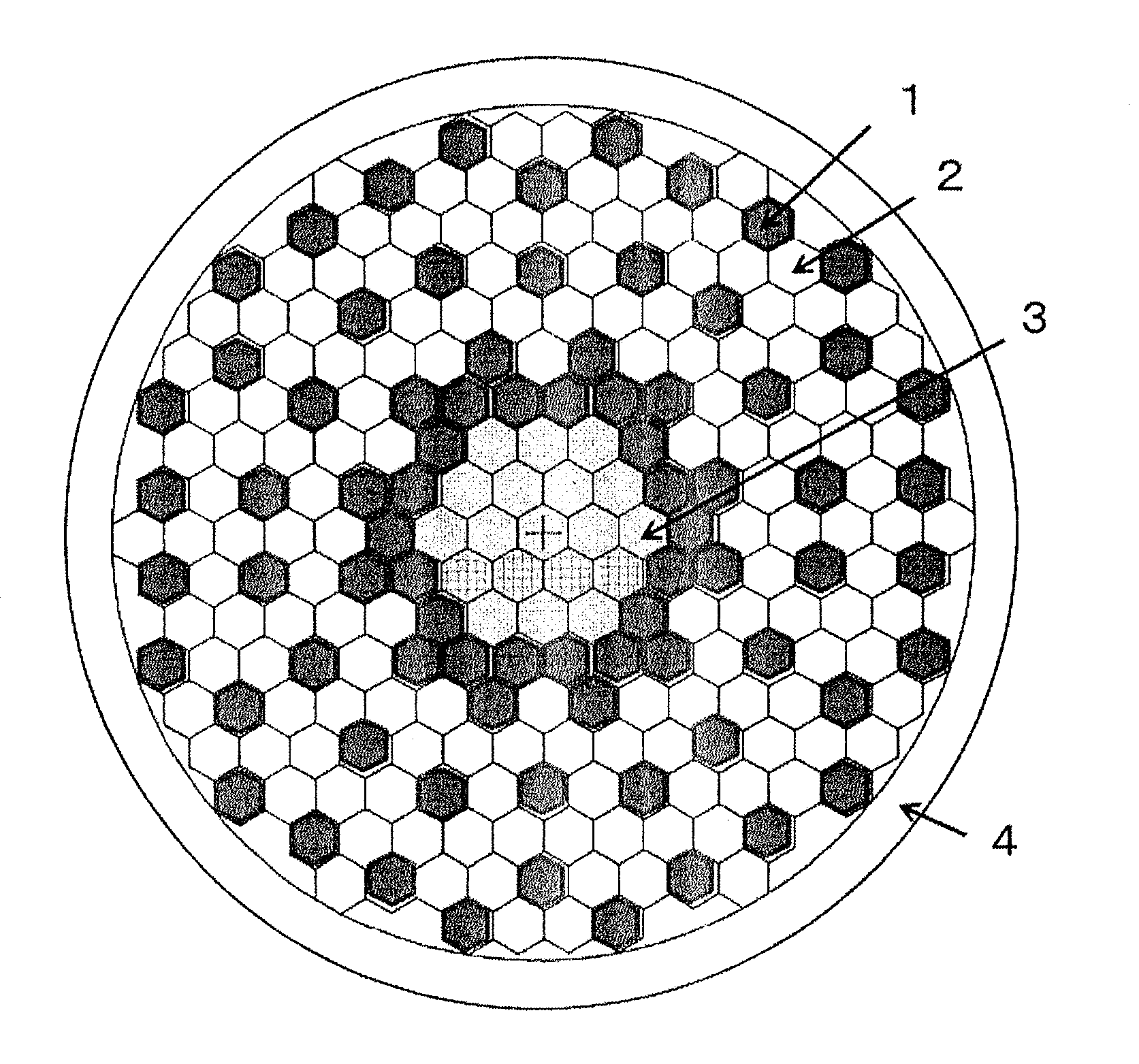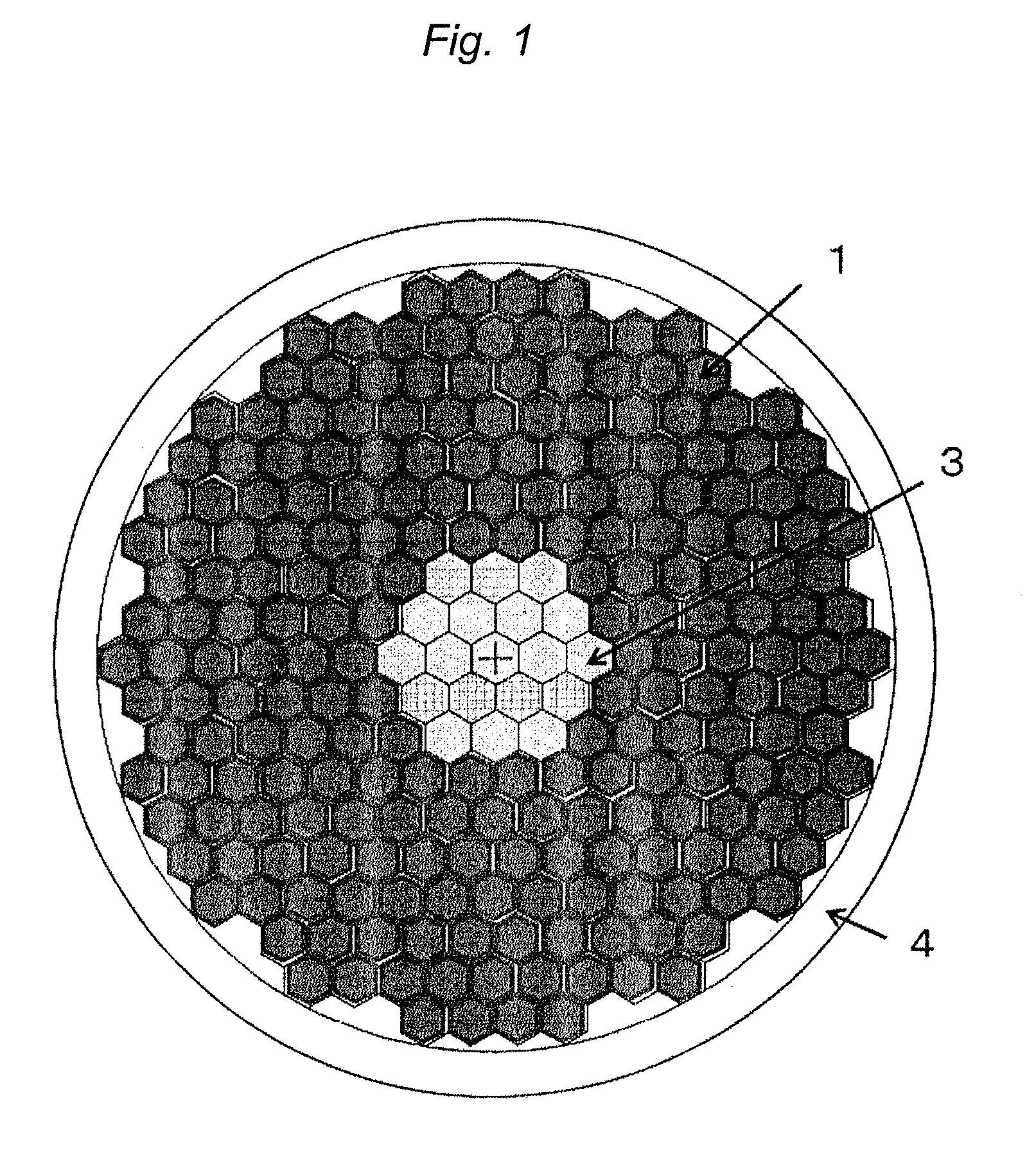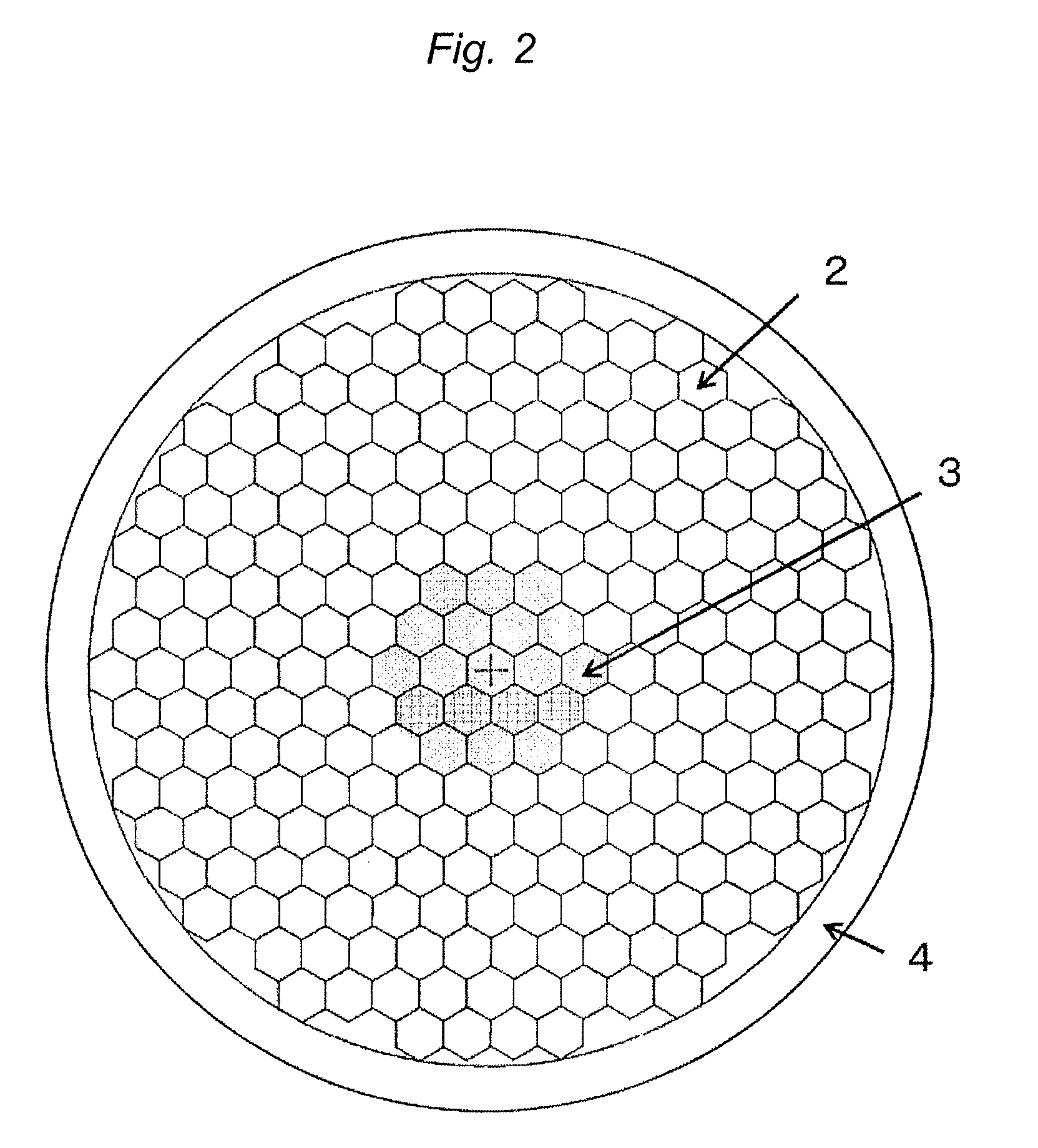Composite barrier-type Nb3AI superconducting multifilament wire material
a barrier-type, multi-filament wire technology, applied in the direction of superconductors/hyperconductors, superconducting magnets/coils, magnetic bodies, etc., can solve the problems of increasing the risk of wire breakage, and reducing the ductility of ta, so as to achieve excellent wire drawing processability, no wire breakage, and suppress the effect of magnetic coupling of filaments
- Summary
- Abstract
- Description
- Claims
- Application Information
AI Technical Summary
Benefits of technology
Problems solved by technology
Method used
Image
Examples
examples
[0043]A composite barrier-type Nb3Al superconducting multifilament wire material in which the total number of filaments is 241 as shown in FIG. 3 was produced. In this wire material, the number of Nb bulk dummy filaments was 19 (cross-sectional occupancy rate: 7%), the number of Nb barrier filaments in the filament region near the core was 30 (cross-sectional occupancy rate: 11%), the number of Ta barrier filaments in the outer layer portion was 144, and the number of Nb barrier filaments was 48 (the cross-sectional occupancy rate of the Nb barrier filaments in the outer layer portion was 25%). In the covering, Ta (cross-sectional occupancy rate: 13%) was used. The core portions of the Nb barrier filaments and Ta barrier filaments had a Nb / Al ratio of 3, in terms of the atomic ratio.
[0044]The above composite barrier-type Nb3Al superconducting multifilament wire material was produced as follows. The Nb barrier filaments and Ta barrier filaments were prepared and extruded by a jelly r...
PUM
| Property | Measurement | Unit |
|---|---|---|
| critical temperature | aaaaa | aaaaa |
| melting point | aaaaa | aaaaa |
| temperature | aaaaa | aaaaa |
Abstract
Description
Claims
Application Information
 Login to View More
Login to View More - R&D
- Intellectual Property
- Life Sciences
- Materials
- Tech Scout
- Unparalleled Data Quality
- Higher Quality Content
- 60% Fewer Hallucinations
Browse by: Latest US Patents, China's latest patents, Technical Efficacy Thesaurus, Application Domain, Technology Topic, Popular Technical Reports.
© 2025 PatSnap. All rights reserved.Legal|Privacy policy|Modern Slavery Act Transparency Statement|Sitemap|About US| Contact US: help@patsnap.com



